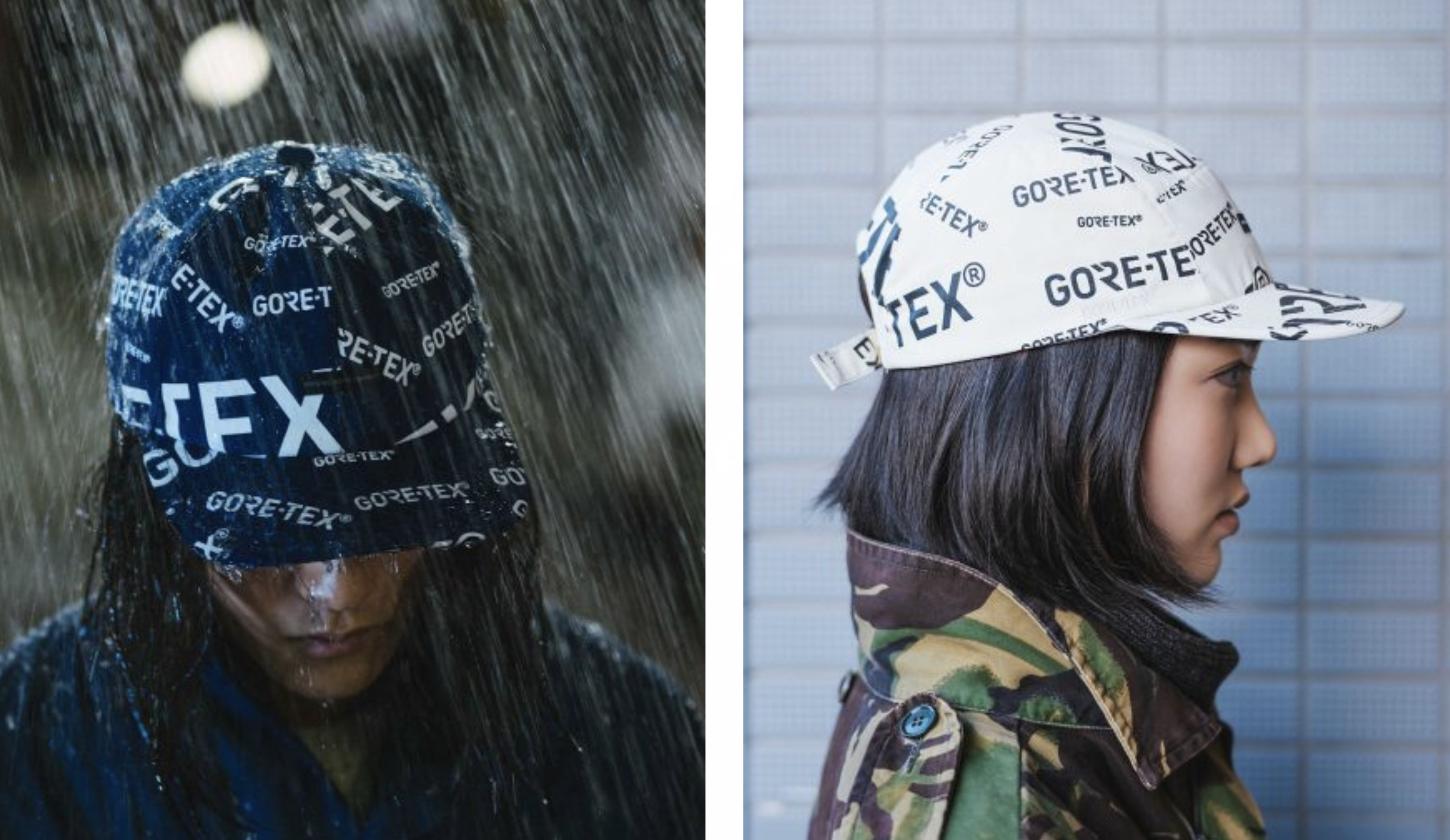I think it’s best that you give me less work. This way I will be happier making clothes for you.
The clock has just ticked over to six am. I have been awake for two hours, barely getting four hours of sleep yet feeling wide awake. Having given up on it, I put on Ryuichi Sakamoto and decided to pen down my thoughts that I have not had the chance to do in the longest time. My usual reading and writing morning routine has been usurped by work, or fatigue, whichever one is more pressing. In the week leading up to Christmas, I could barely sleep more than a few hours. Any time I wake up in the middle of the night, my mind is immediately tuned in to work. The last few months have been devoted to ROSEN-X, from designing, sampling, testing, shooting, and launching the collection. While all that was a normal process, I did not anticipate the level of demand that I received within the first two weeks alone (thank you for all your generous support). So much so that my primary “broker” – so-called that because this Jack-of-all-trades-but-master-of-none doesn’t sew, he has a network of tailors he works with, compared to my second tailor who actually can do everything from pattern-drafting to sewing – complained of the amount of work I’m giving him, how complicated each piece was, and how overwhelmed with stress he has been. This was unprecedented.
ROSEN-X 2.0 is undoubtedly more complex and substantial than the first collection. The trip to Guangzhou’s textile market has proven useful. I now have access to interesting synthetics and treatments in unusual colours, some of which I have put to good use in this collection. Making clothes for colder months allowed me to use heavier membranes with added water-resistant properties. With that said, I have come to realise that stretch fabric is so much more comfortable to wear than heavy duty water resistant stiff fabrics. With all the fad for giant neon Gore-Tex logo slapped on every other streetwear brands, one wonders when the bubble will burst. Most people who wear these clothes need them for urban commute. A polyester membrane with 10,000mm hydrostatic head is quite an overkill for what we need in our daily use. For reference, the UK Ministry of Defence considers 800mm to be waterproof. Moderate water-resistance against the rain, breathability, range of motion, and insulation in winters, would be more applicable for city dwellers.

What I’ve noticed is that the crowd who wear technical clothing tends to fall into four categories. Those who wear them purely for utility, those who are obsessed with technical features but frankly don’t need most of them, those who wear for the appearance of utility, and those who want clothing that bridges fashion and utility. In its purest sense, utilitarian garments are made for soldiers, construction workers, firemen etc. Within the casual context however, the ones who prioritise technically advanced clothing tend to be the outdoorsy-type like skiers, climbers, hikers and athletes. Waterproofness, stretch, breathability and durability of fabrics are extremely important to guard our fragile bags of skin, bones and liquids against forces of nature while allowing maximum range of motion. Fashion is less of a priority; the value comes from competitive pricing and advanced technical features. The North Face and Patagonia dominate this segment, and Nike for athletes. The second group loves to dork out on numbers – from water repellence to membrane pore sizes – taped seams and proprietary fabrics. Though I wouldn’t consider it a bad thing, many fawn over branded textiles and overly-complicated construction without considering what one needs in one’s daily lives, so much so that there is a tendency to overlook pedestrian synthetics and common cotton in favour of proprietary synthetics. Unless one is largely exposed to the elements on a frequent basis, this level of pedantry simply does not matter much when we spend most of our days traveling comfortably in climate-controlled vehicles. I call it the nerd approach. On a tangential note, the nerd approach is a buying behaviour that can be found in many other interests, be it Menswear, watches, cars.
The third group is the most prominent group on Instagram. Scroll through the “techwear” hashtag and there will be endless images of young boys and girls strapped up from head to toe in a cacophony of loud branding, unnecessary zippers, webbings, oversized pockets, overly-designed bags that are supposed to denote edginess but frankly come across as mindless consumption. They strive to look as caricaturishly aggressive as possible. The appearance of utility is more important than actual utility.

These youths – and the not-so-youthful – found themselves enamoured with a trendy fashion subculture that jived with them and combined it with the desire to take part in the game of one-upmanship – or in internet lingo – to flex. Any trend could be co-opted. Yesterday was Rick Owens. Today ACG. Tomorrow who knows. I call it the hypebeast mentality, in which fashion becomes a quest for validation to boost one’s self-esteem. Many exhibit the same behaviour as a sneakerhead, collecting as many ‘grail’ pieces as possible, with the goal of showcasing the latest purchase in a ‘fit pic’ rather than how the clothes can enhance one’s appearance. A telltale sign of this is the lack of attention in how clothes fit one’s haircut, facial features and body shape.
The fourth group may or may not have come from any of the prior three, who like the military and athletics-influenced aesthetics set in futuristic dystopia, but would like to look more presentable within their social environments. Many of them are fans of Blade Runner, Ghost in the Shell, Akira and William Gibson’s novels. They take visual cues from fictions without being overly literal with their references. Clothing becomes less of a mask to hide insecurities that often manifest in consumerist one-upmanship games, and more of a tool to enrich one’s existence, whether by increasing social utility, and/or reducing inconveniences. A water-resistant hooded jacket negates the need for an umbrella; a spill-resistant suit keeps one looking fresh after an accident at lunch. The clothes that infuse these technical properties are often adapted to typical everyday context, although this group may prefer a touch of aggression in its designs.
It is a pity that the prevailing image of ‘techwear’ is largely based on Acronym and its derivatives. The brand itself is fine, it’s the lack of diversity that is worth noting, especially when there are so many different approaches that early designs have spearheaded. If we look back far enough, Massimo Osti of C.P. Company was a pioneer designer who merged fashion with utility for use in urban setting. Then came a short-lived stint by a London-based label Vexed Generation who raised the issue of constant surveillance of the City of London pre-Internet 2.0, before anyone could predict that we would freely give our personal information to corporations. More muted options with top-of-the-line technical textiles have been available pre-Internet since the 80s and 90s, from Issey Miyake, Burberry, Prada to Zegna. The difference is that they do not market themselves as techwear, and do not possess the design language that appeal to younger people. Arc’teryx Veilance and Outlier do provide a minimally-designed, office-appropriate attire. To create a cohesive look from all these different brands requires some creativity, a challenge that doesn’t seem to be taken up by many #techwear enthusiasts so far.

I suspect the reason why #techwear as we know it today has been so one-dimensional is that the current iteration is still in its infancy, as shown by the sharp rise of interest less than two years ago. Many who stumble into the sub-culture gained their first exposure from social media. When the sources of inspirations are the same, so too will the end product. Social media are focused on visual cues; the guy with the most grails garner the most attention, either that or be an attractive girl. A girl with an out of place chest rig and ill-fitting jacket is a fodder for thirsty boys. The subculture that began as a practical approach to fashion lost its meaning and became a numbers game under the guise of aesthetics. Nike and Errolson Hugh knew this all too well. It shouldn’t be a surprise that they released the Nike Prestos in the most eye-catching colours imaginable. This way they can grab the most precious commodity in 21st Century – attention. They clash jarringly with the muted colours that are utilised by Acronym and Nikelab ACG (with the exception of electric yellow that they produced recently). Many have fallen into their trap of collecting these shoes like they would with Pokemon – or rich women and gaudy Birkins – without considering how the shoes would fit their existing wardrobe. I can only wonder if people would buy these shoes in droves if they were released by some other brands.

I write this as someone whose life and viewpoints used to be controlled by the clothes I wore. Leather jacket in 30 degress Celcius? Check. Ignoring the blisters forming in my uncomfortable designer heels? Been there. Refusing to admit that Geobaskets make me look like a dwarf? Yep. I’ve done all kinds of mental gymnastics to justify my faulty purchases. That is not to say that I have stopped making faulty purchases, especially considering the Rick Owens pieces sitting in my closet that barely fit into my lifestyle. At some point after many experimentations (which I firmly believe is an important part of growing up), we need to realise that we should look at clothes as another tool in the box of life, and not derive self-worth from the brands we wear.





“fans of Blade Runner, Ghost in the Shell, Akira and William Gibson’s novels”
Can’t believe you’d call me out like this ????
Not intended as criticism, more of recognition. From one fan to another. Cheers!
This is honestly an amazing insight into what fashion aimed at youth is like today. Thank you, I loved reading this!
The pleasure is mine.
very good observations, I didn’t know your blog but I will be now a regular reader
Is it possible to identify the boots he’s wearing?